25 Shocking Facts About Your House You Never Knew
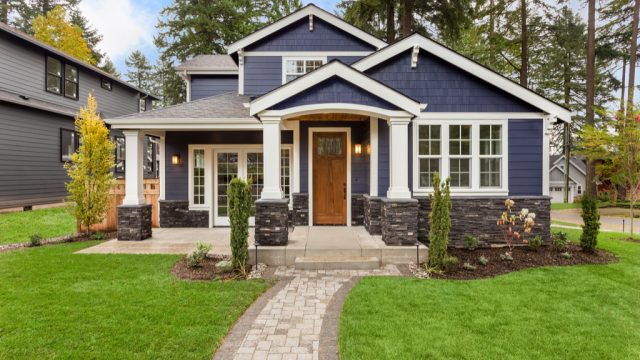
Though we’re all quarantining at home now, many of us still know remarkably little about the space that occupies so much of our precious time. From how the paint on your home’s exterior was originally chosen to the real reason behind those creaking floorboards, we’ve rounded up the most amazing facts about your home you never knew. And for more insight into your space, check out these 25 Home Features Experts Say Have a Secret Purpose.
1
The creaks in your house have little to do with its age.
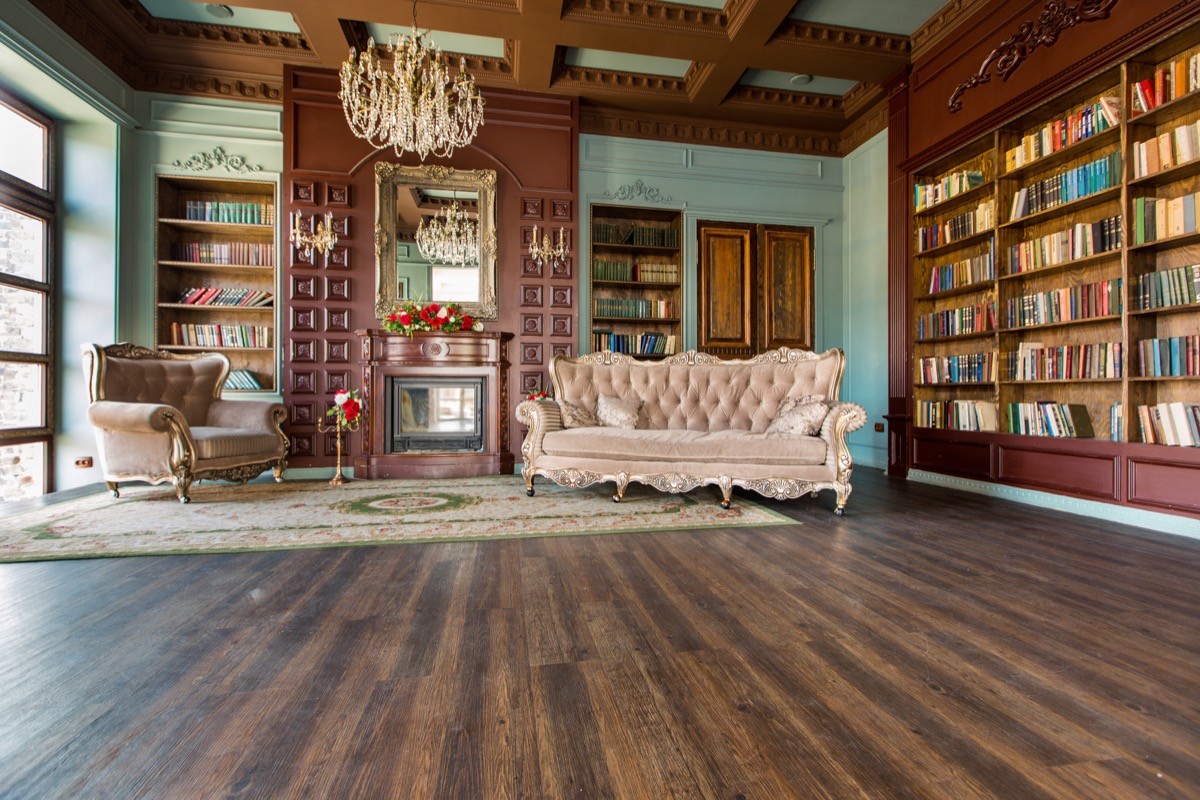
While you may hear people bemoaning the nighttime cacophony in their old home, those creaks aren’t actually all that likely to be related to the age of the house.
The sounds are more likely to be the result of temperature and humidity changes inside your house, explains Alex Berezowski, owner and general manager of The Foundation Experts. “Wood is porous and can expand and contract with changes in temperature and humidity. During the wintertime, wood flooring tends to contract, and in the summer, it often expands,” says Berezowski, who notes that if your home’s relative humidity isn’t between 35 and 55 percent, you’re more likely to hear creaks.
2
That space under your lower cabinets serves a very specific purpose.
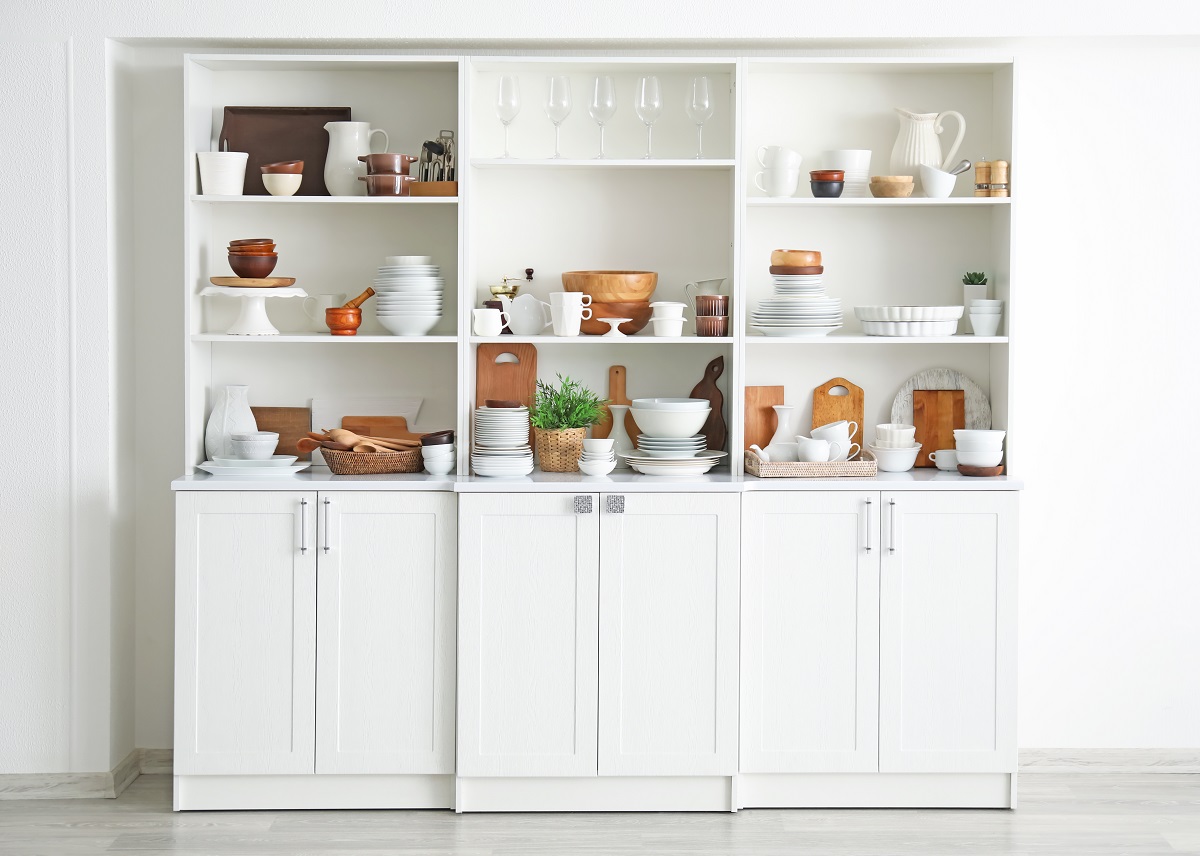
There’s a reason your lower cabinets are lifted and protrude slightly—and it’s not just aesthetic. This area, called a toe kick, allows you to stand closer to the counter while you’re cooking, explains Jason Pickens, designer and host of HGTV.com’s The Work Around.
“It’s just enough when combined with your countertop overhang to keep you from having to lean your upper body forward while working. At the same time, it also raises the doors of the cabinets off the ground so they can swing over your toes,” Pickens explains. And if you want to make over your cooking space, start with these 27 Best Ways to Upgrade Your Kitchen, According to Experts.
3
The cabinet under your sink isn’t really for storage.
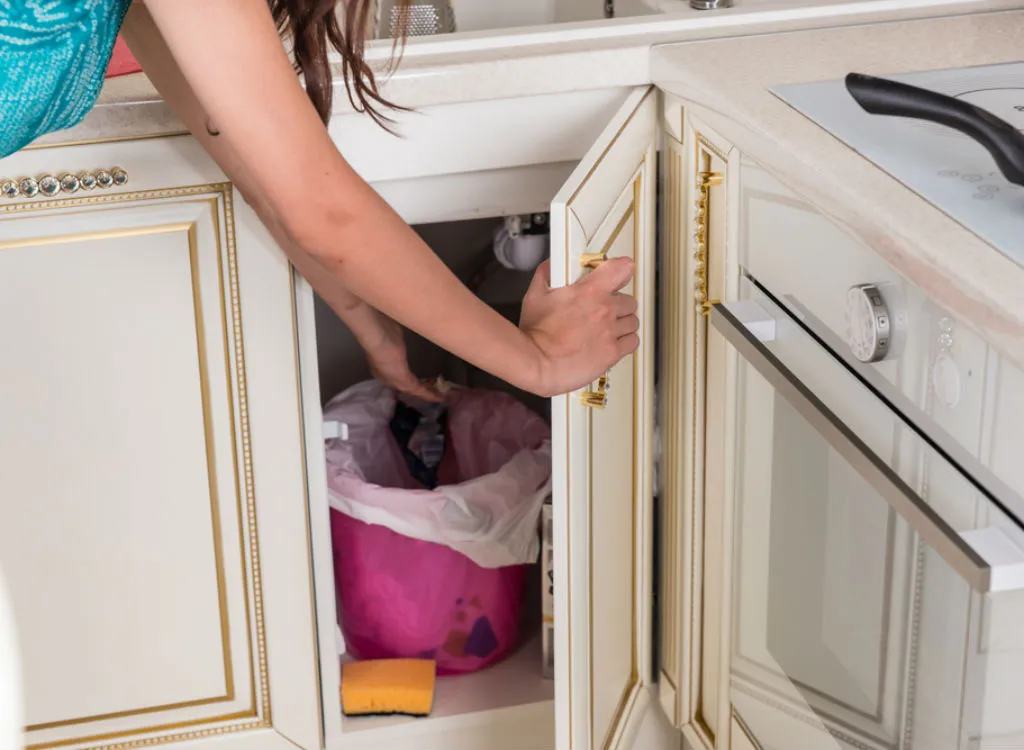
While you’ll likely find assorted cleaning products under the kitchen and bathroom sinks in most homes, that’s not what the cabinet is for. “It’s actually designed to be able to access the plumbing in case of leaks,” explains Robert Taylor of The Real Estate Solutions Guy.
And you might want to keep it that way—or risk damage in the future. “When used for storage, the plumbing gets bumped around and leaks occur,” he says.
4
Your brass doorknobs may keep you healthy.
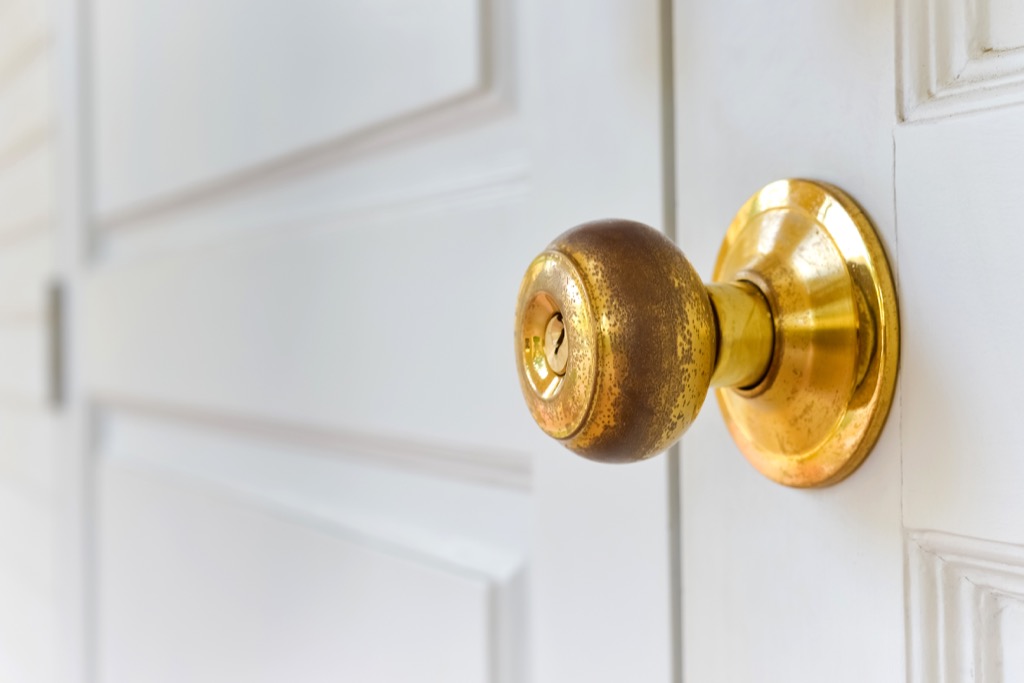
If your home has brass doorknobs, it’s staying cleaner on its own than homes with wood or glass ones.
“Brass doorknobs will typically disinfect themselves in about eight hours,” explains Vancouver-based Realtor Shannon McNulty. “This is because the metal ions in brass and copper are actually toxic to mold, viruses, and other living things.” And if you want to keep your home in tip-top shape, make sure to avoid these 23 Common Cleaning Mistakes That Experts Say Actually Ruin Your Home.
5
Those holes on the bottom of your brick house aren’t foundation problems that need correcting.
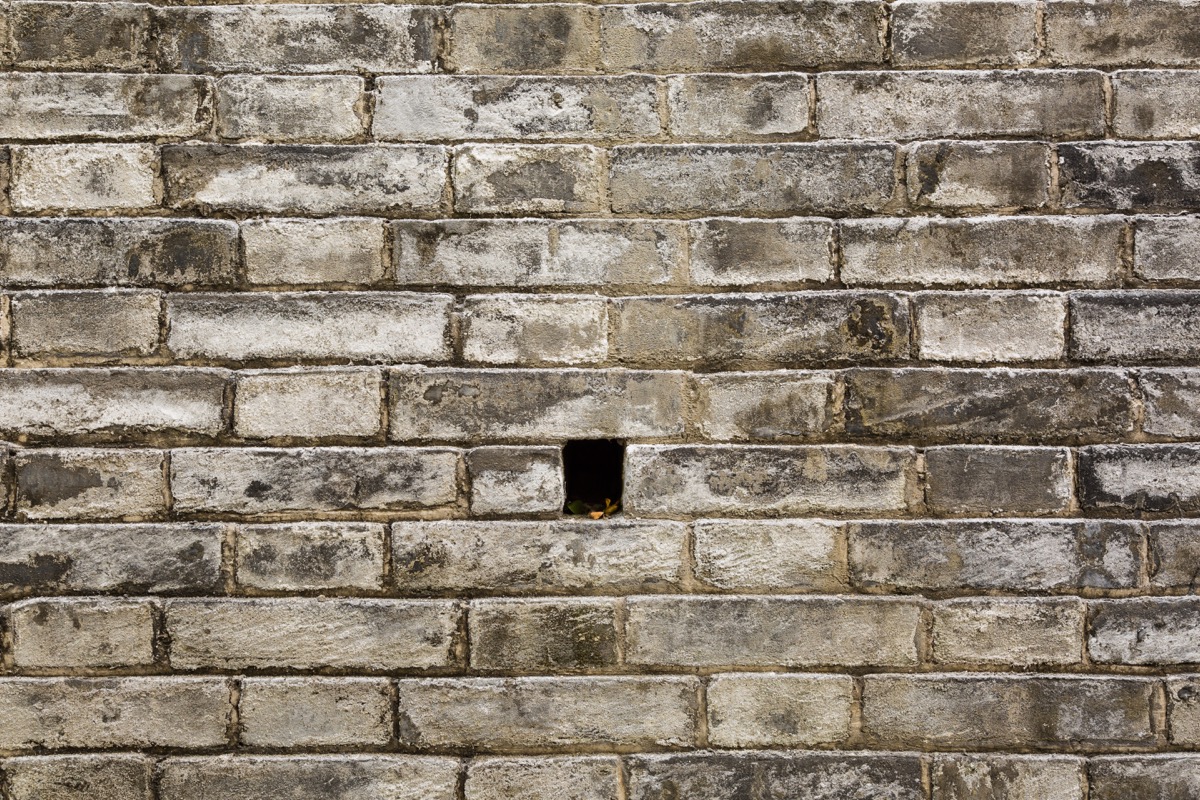
While they may look like a foundation problem, those holes in your brickwork shouldn’t be filled in.
Architect Colin Haentjens, a designer with The Knobs Company, notes that these holes—called “weep holes”—are actually an essential part of brick structures. Haentjens says that between a home’s exterior brick and the plywood beneath, “there is an air gap that functions as a rain screen—any moisture that gets behind the brick drains down to the bottom of the wall and out through the weep holes.”
6
The overhang on your roof is a good thing.
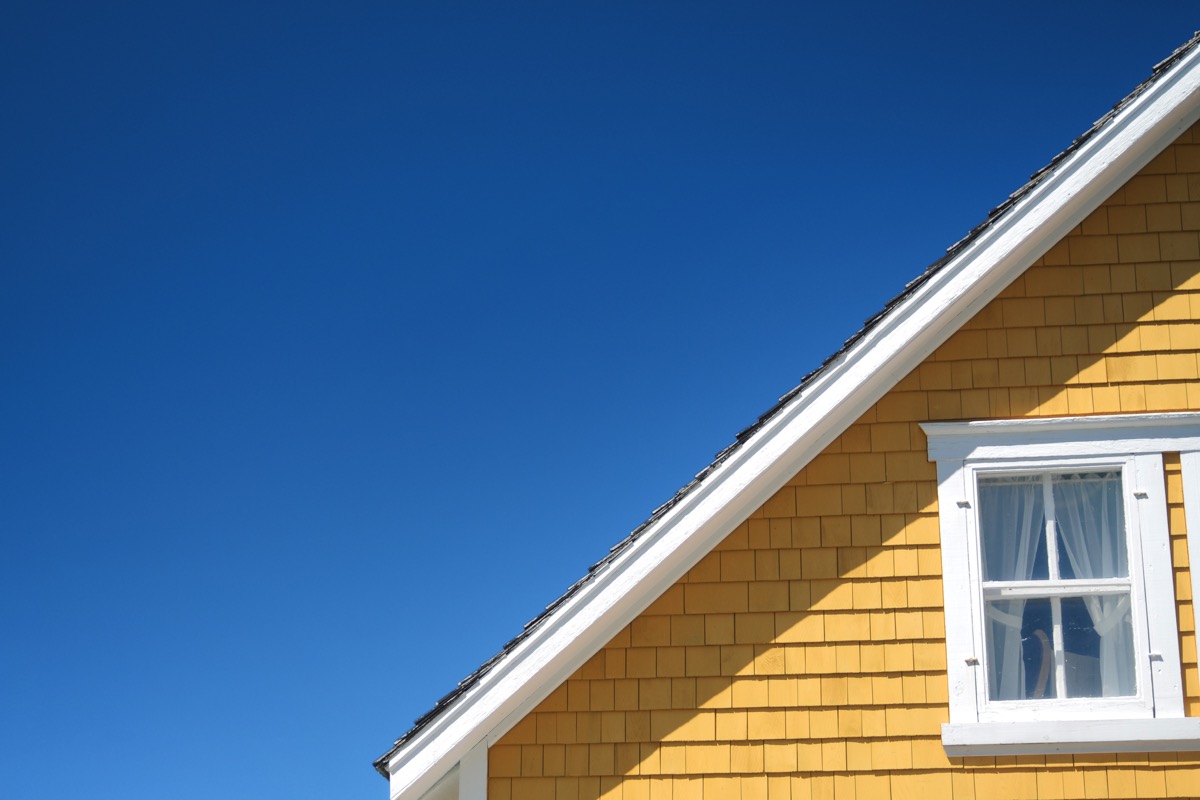
If you’ve ever wondered why your roof doesn’t look like it’s a perfect fit for you home, there’s a good reason.
“When we apply shingles to a roof, we actually create a slight overhang so that the shingles jut out a half of an inch,” explains Eamon Lynch, director of warranty service at Power Home Remodeling. In doing so, you’re actually keeping wind and water out from under the shingles, keeping the roof intact for longer. And if you want to reduce the risk of problems in your home, make sure to nix these 23 Bad Home Design Choices That Cause Damage.
7
The style of your roof depends on where you live.
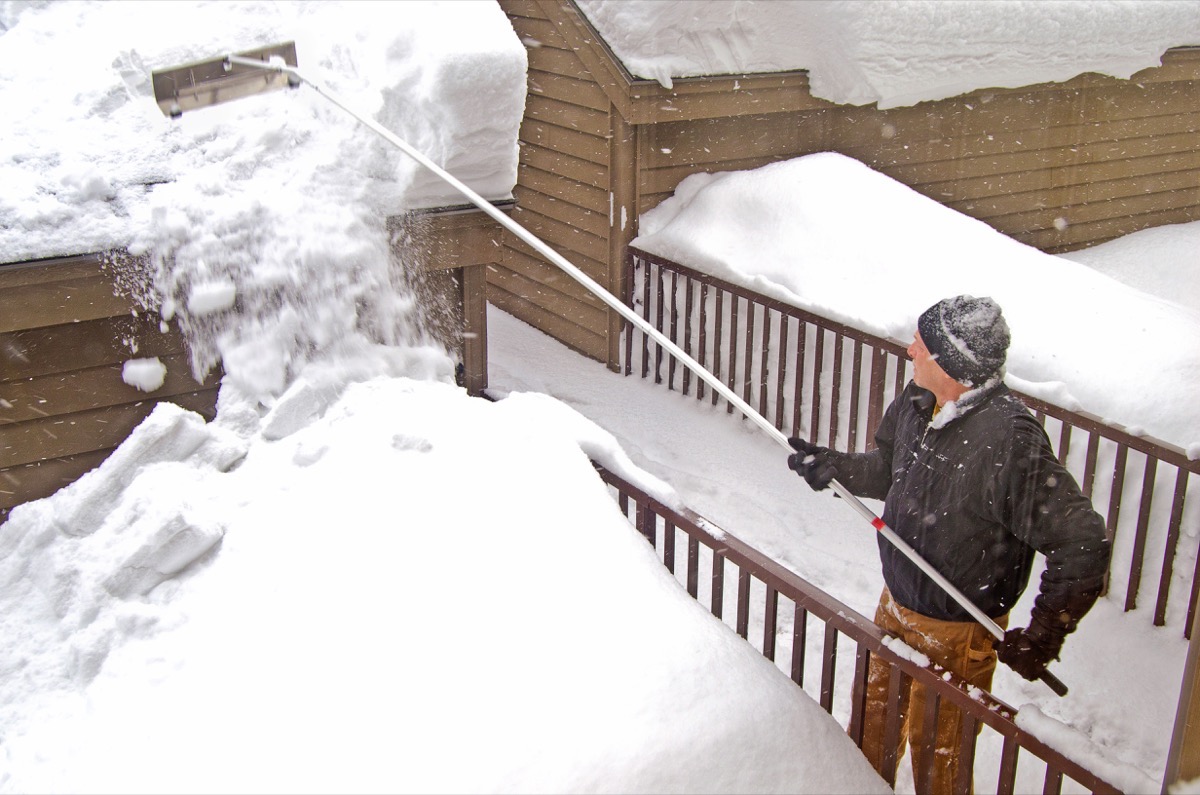
Ever wonder why your house in Syracuse has a different roof style than your friend’s in New Orleans? It’s because of where you live, as different types of roofing are suited for different climates. For instance, gabled or peaked roofs tend to work best in areas where there’s snow accumulation so that it doesn’t weigh down the roof, while in warmer, drier climates, you’re more likely to see flat roofs.
8
You can tell your home’s age by its roof.
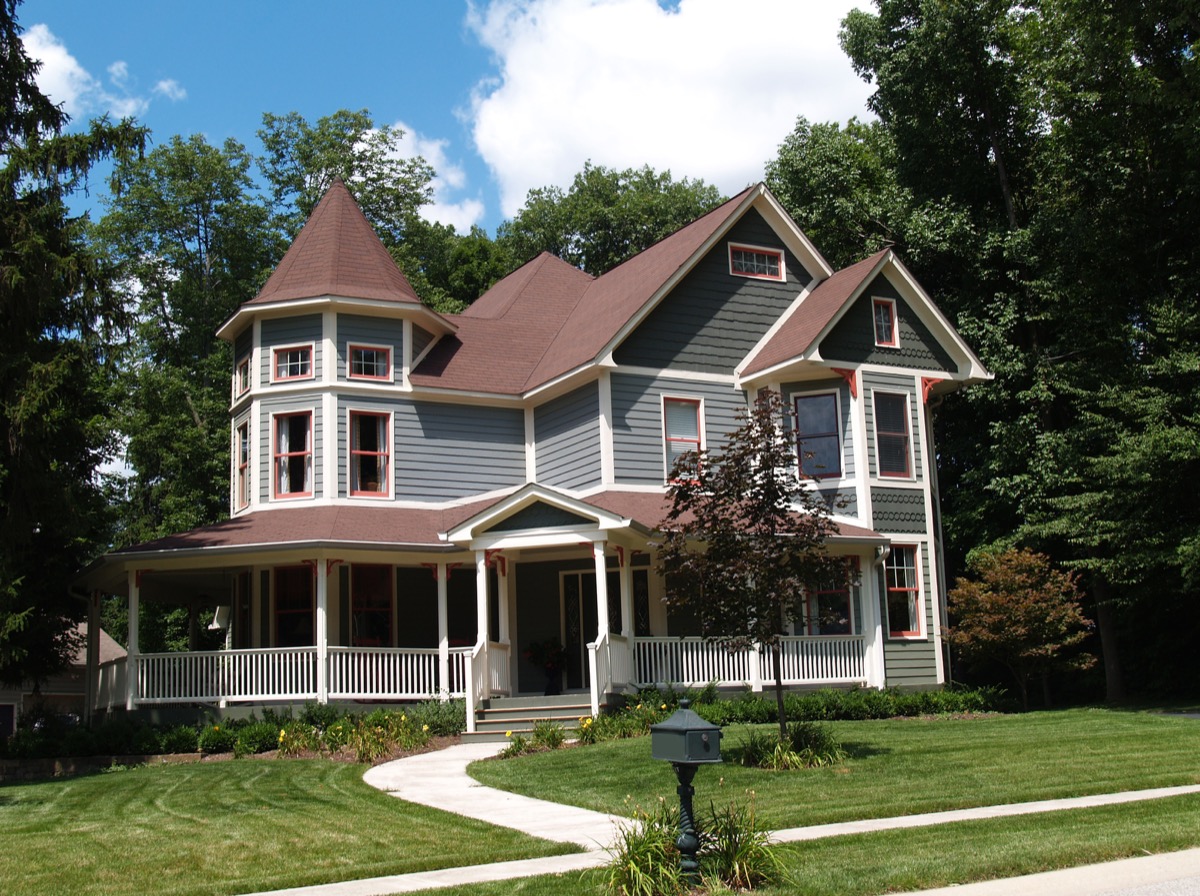
Don’t know exactly when your house was built? Your roof can help you make an educated guess.
“Victorian-style houses, distinguished by a very steeply pitched roof, date back more than a century,” explains Lynch, who notes that homes with flat roofs are likely to have been built in the 1970s.
9
And often its color, too.
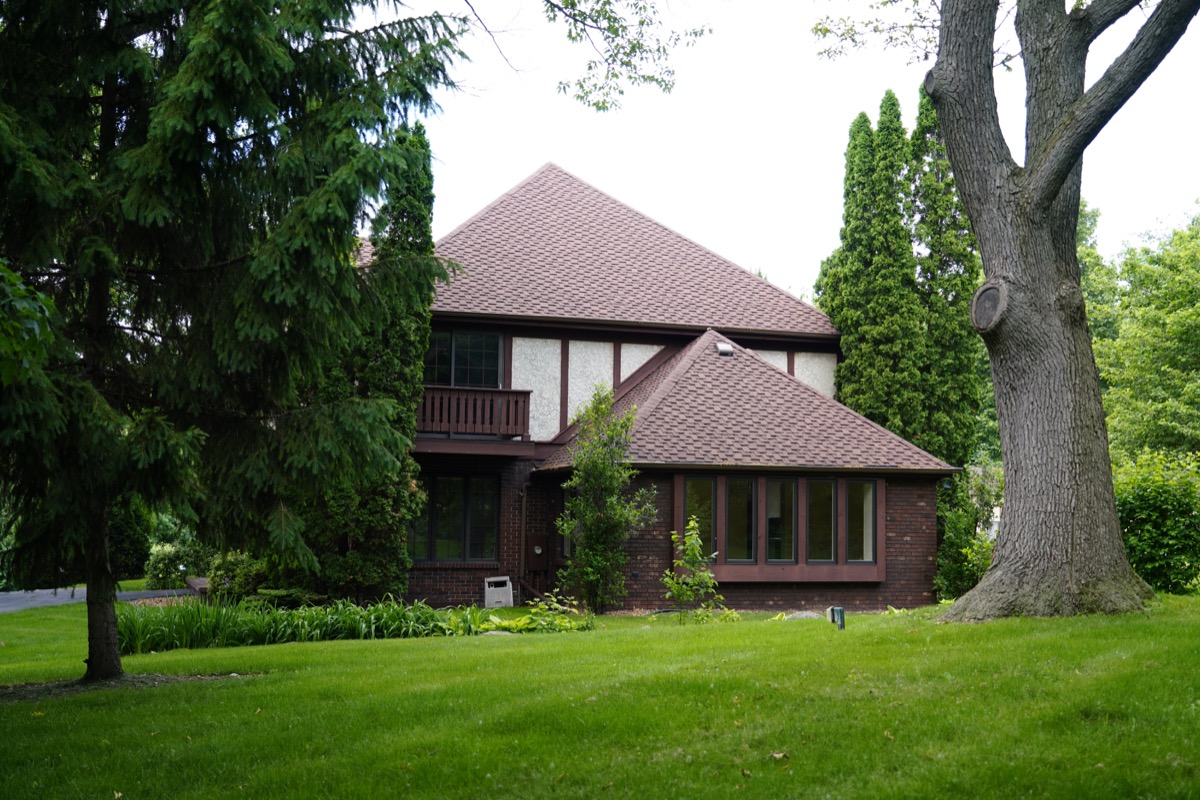
Unless you’ve recently repainted, your home’s exterior color could provide some valuable insight into its age.
“If a house is painted in browns or yellows, it’s likely to have been built in the ‘70s or early ‘80s,” says Lynch. Meanwhile, if it’s painted gray or black, it’s more likely to have been built or repainted in the past decade.
10
Your home may have its own bird box.
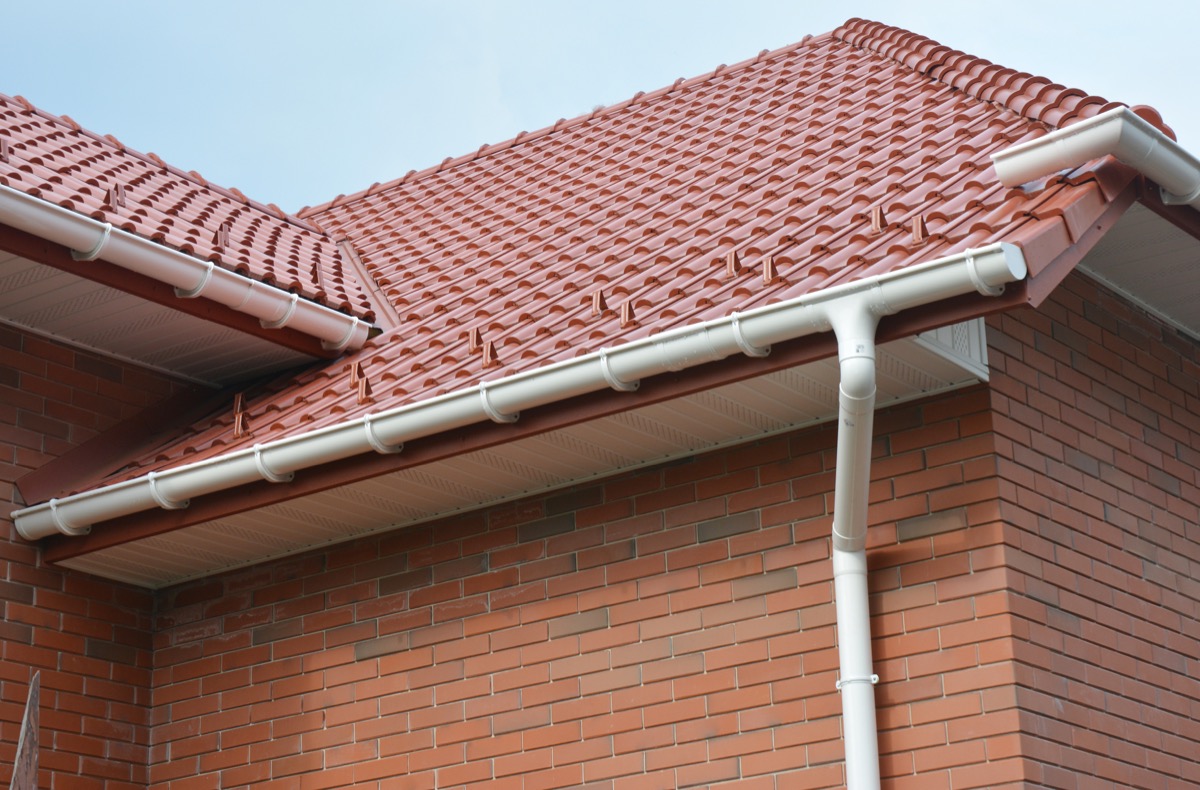
While the term “bird box” may evoke visions of a blindfolded Sandra Bullock, it may also be an important part of your home.
“Bird boxes are located at the corners, typically in the front of your home, as a connection between the overhang of your roof and your home’s siding,” explains Lynch, who notes that these roofing elements are not actually intended for use by birds, contrary to the name.
11
Your staircase balusters are named after a popular fruit.
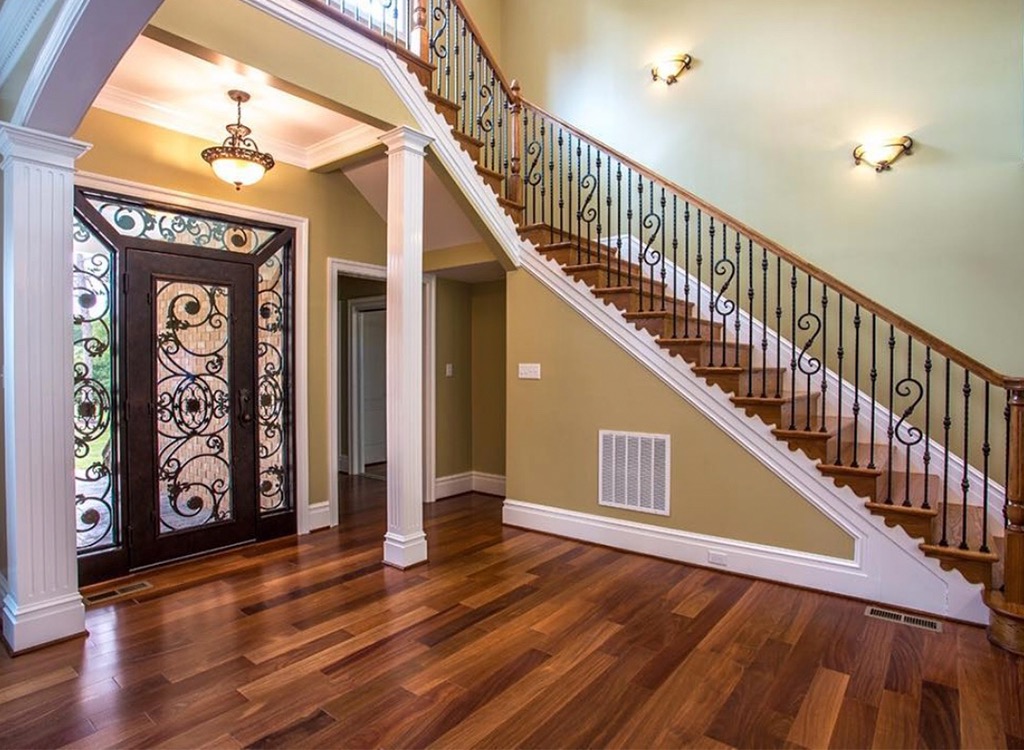
Balusters—also known as spindles—are named after balustra, the Italian word for pomegranate flowers. While the spindles are typically less ornate today, balusters once had a more curvaceous shape at the top where they connected with the banister and were said to resemble the pomegranate plant’s red blossom.
12
Your farmhouse’s red exterior is probably paying homage to an old-fashioned tradition.

It’s not a coincidence that barns and many farmhouses are painted red.
“Farmers didn’t have a lot of money to buy paint, and so they started to experiment with what they had on hand: skimmed milk, lime, and red iron oxide—also known as rust,” explains Jon Beer, a contractor specializing in historic restorations and owner of Jon Beer Contracting in Newburgh, New York. Beer explains that combined, these materials created a protective red coating for woodwork, and on many farms today, buildings are still painted red to honor this tradition.
13
Your stately Victorian home may have been built from a box.
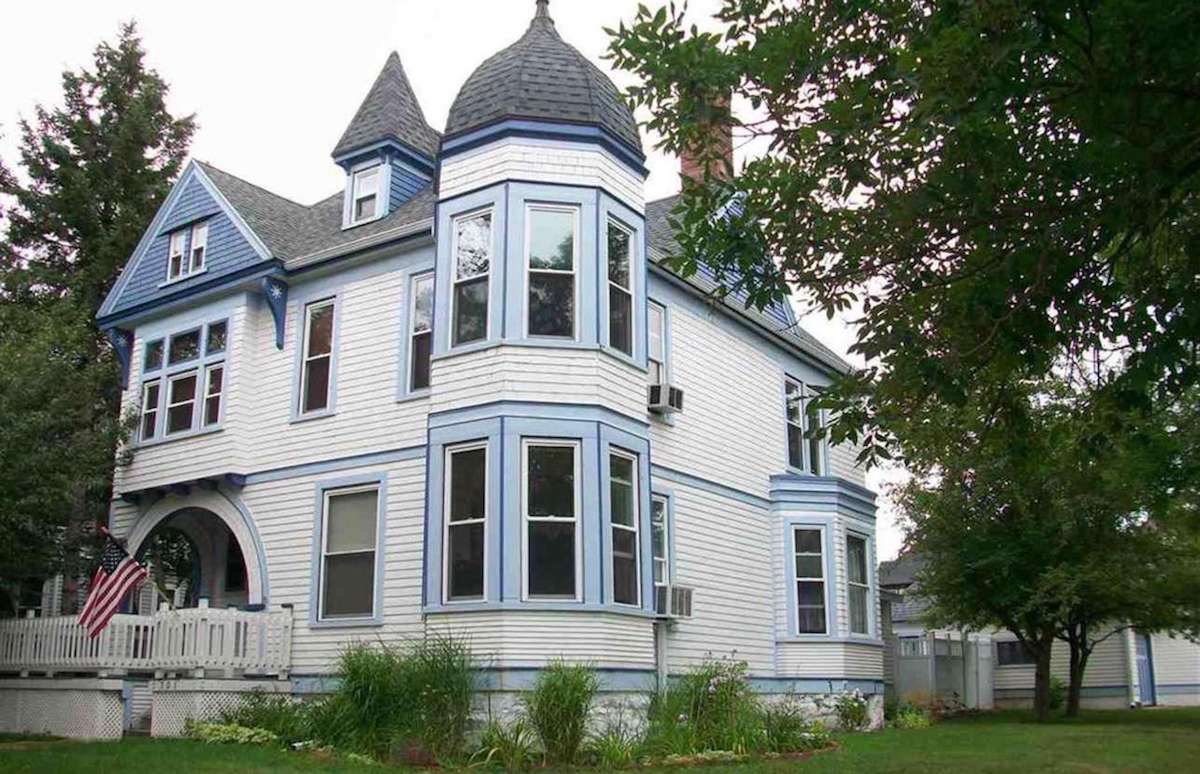
That stunning Victorian you live in might’ve been assembled like your average dollhouse. “Many Victorian homes are actually ‘kit homes,’” says Beer. “[Between 1908 and 1940], Sears & Roebuck listed homes that could be bought and assembled for as little as $6,700.”
14
The bricks on your home’s exterior have a very adorable name.
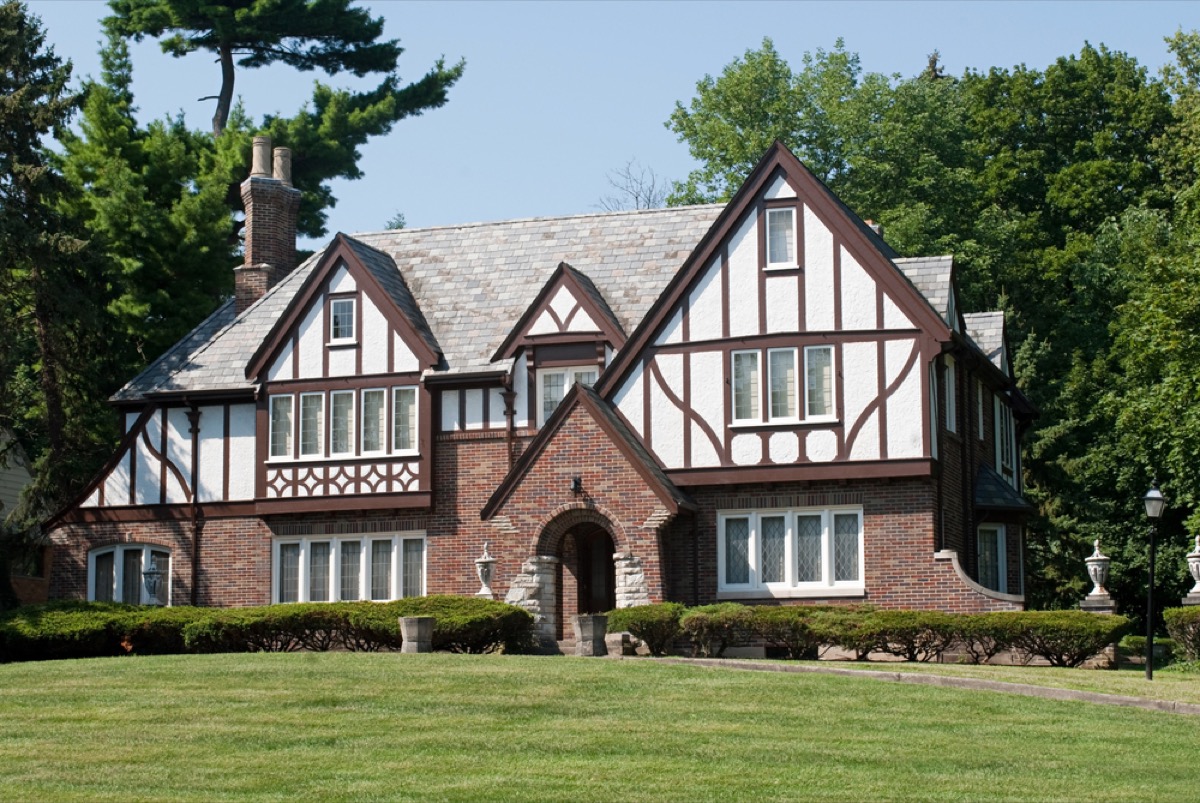
Those bricks sticking out from your Tudor home share a name with a popular confection.
“The little pieces of brick that stick out in almost a random pattern, contributing so much to the textural quality of the exterior, are called chiclets, like the chewing gum,” says Leslie Saul, founder of architecture and design firm Leslie Saul & Associates.
15
Your textured plaster walls were likely made using real flowers.
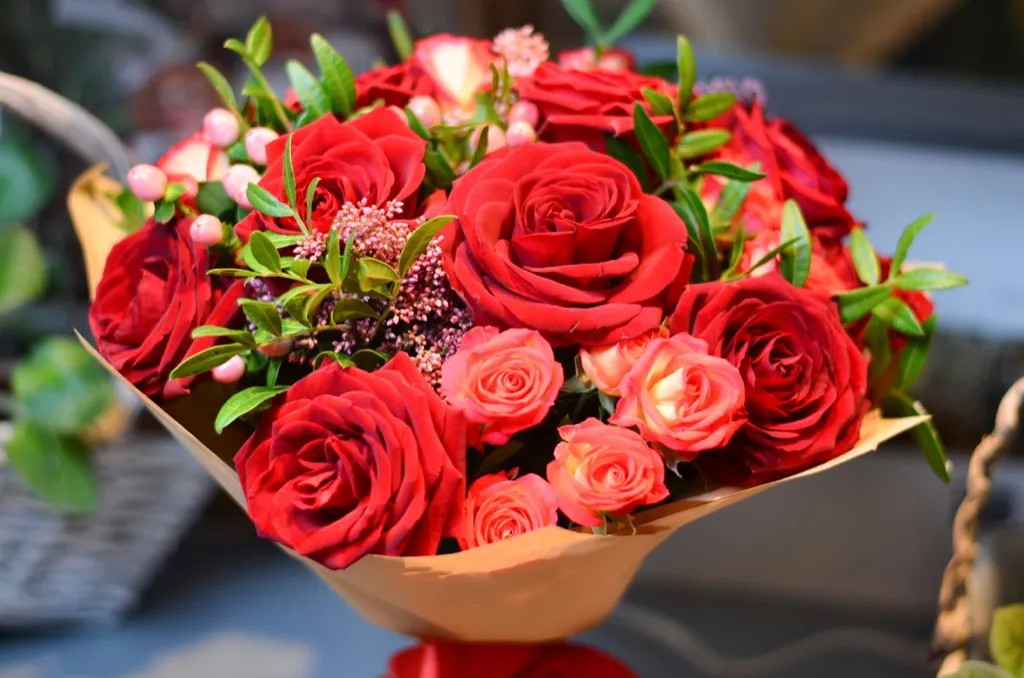
The textured interior plaster in many older homes might have been created using a surprising technique: pressing flowers into it. “The interior plaster [in older homes] was textured, very often in what was called a rose pattern… the plasterer actually pressed a rose into the plaster to create the effect,” says Saul.
16
Your little balcony has a Shakespearean nickname.
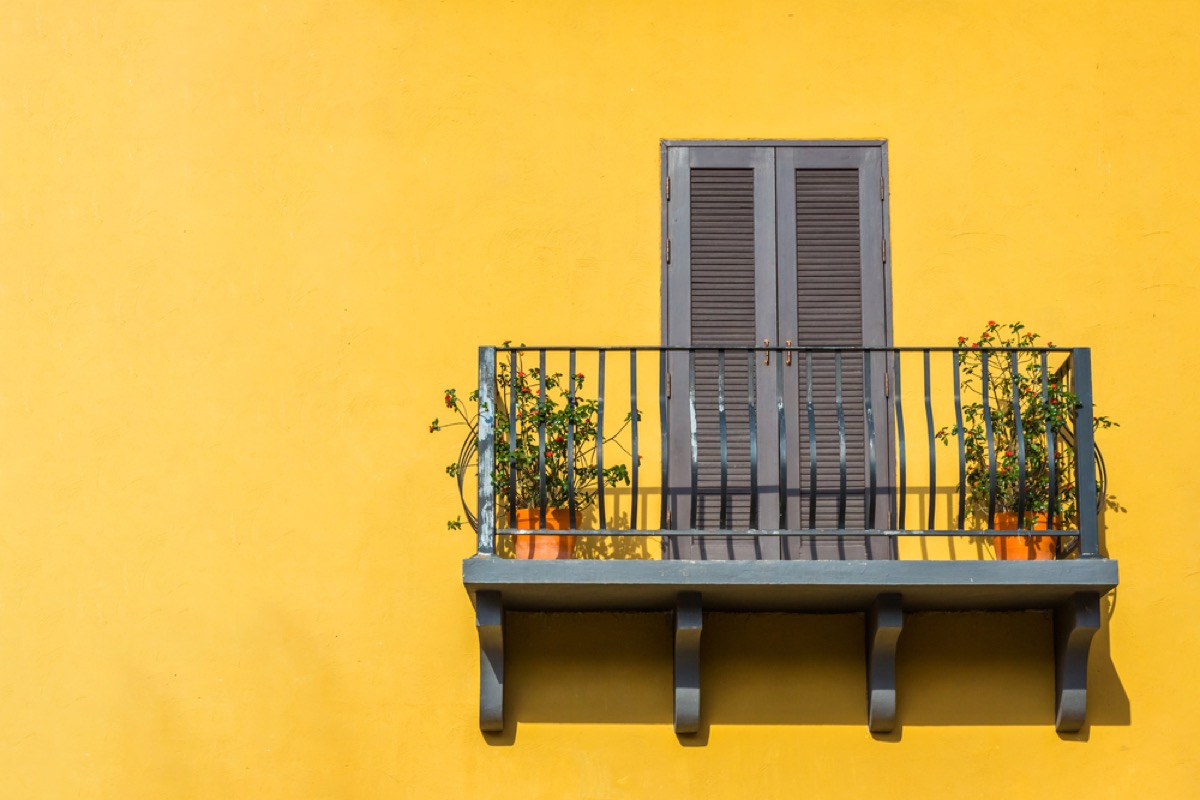
Shallow balconies, or balconets, are often referred to as Juliet balconies after the famous balcony scene in Shakespeare’s Romeo and Juliet.
17
Your thermostat’s placement makes a huge difference in its readings.

Though many people assume that thermostats measure the temperature being released from your heating system, it actually measures the temperature where the dial is installed—and as such, it needs to be positioned carefully. “The thermostat is designed to read the temperature from where it is located,” says Marla Mock, vice president of operations at Aire Serv Heating & Air Conditioning.
“If it is placed near a heat source or window that allows a lot of light in, the reading can be incorrect, making the thermostat turn the system on and making the house uncomfortable.” Her recommendation? Keep it in a hallway and away from direct sunlight, windows, or doors.
18
Your door’s color may increase the value of your home.
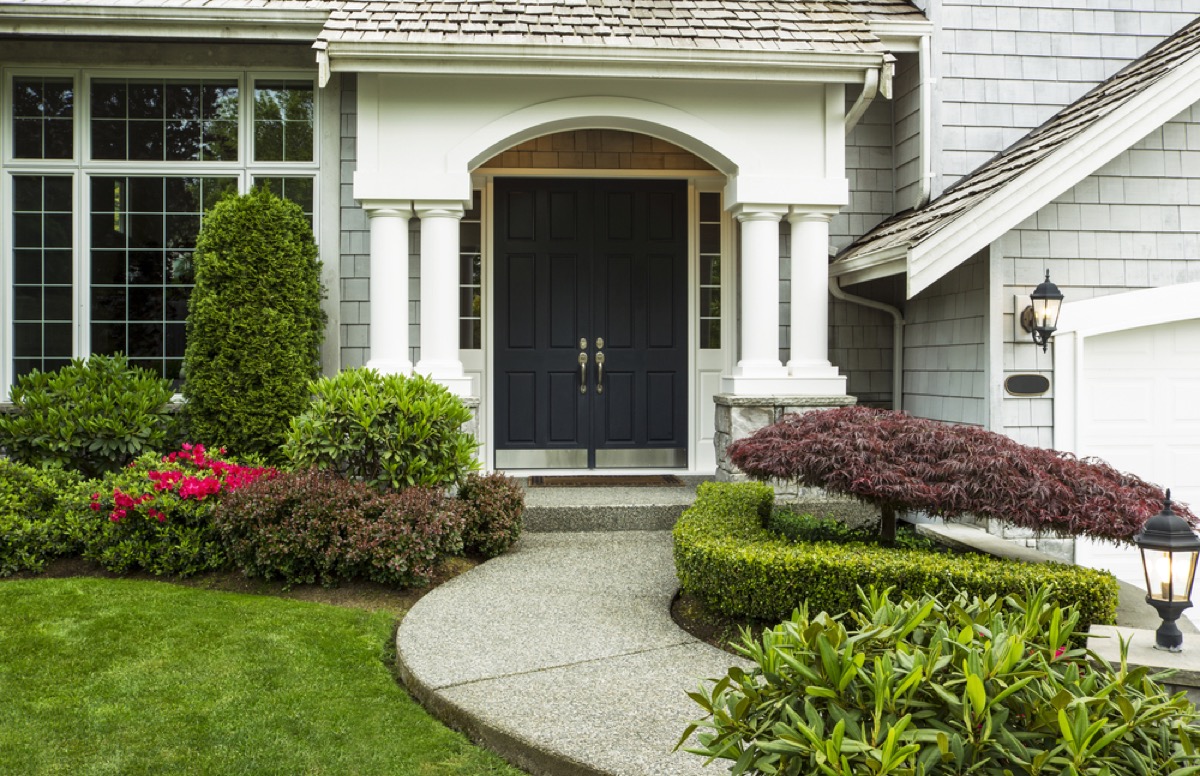
If your house is up for sale, you might want to freshen your front door with some black paint first. According to a 2018 report from Zillow, homes with black or gray front doors fetched $6,271 more than anticipated.
19
Your mismatched kitchen may earn you more money.
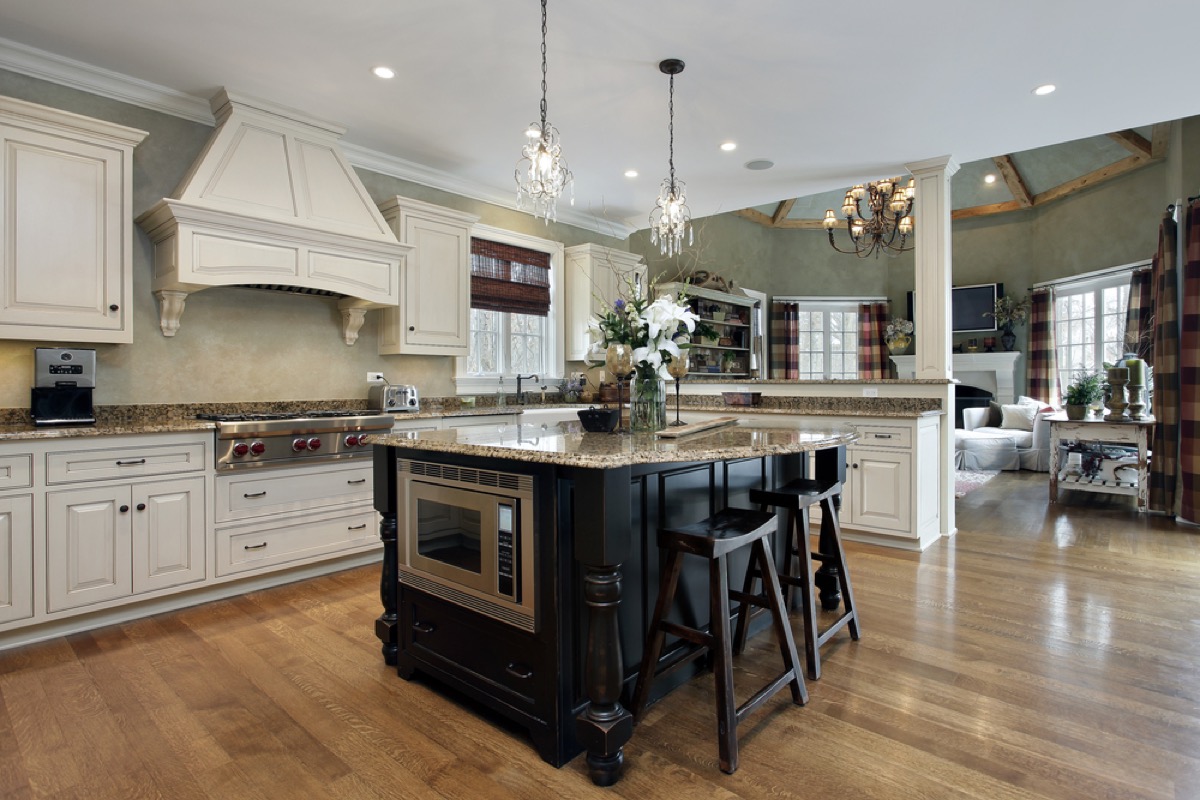
That matchy-matchy kitchen might not yield as many high offers as you’d expect. According to Zillow’s data, kitchens with upper and lower cabinets in different colors, or with an island in a different shade from the rest of the cabinetry, earned sellers an additional $1,547 on average.
20
Your home’s top balcony has a sad backstory.
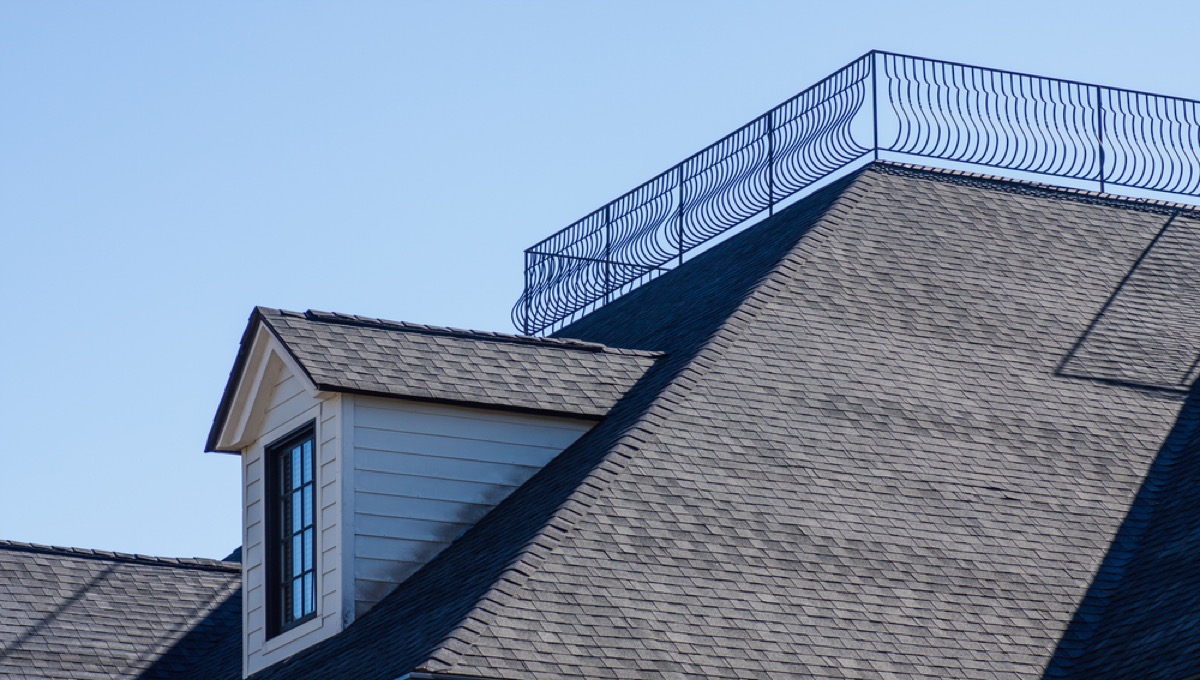
According to The Maritime History of Massachusetts 1783-1830, in addition to being a charming decorative element, these upper balconies were designed to provide a good view of ships returning to port.
However, these Italianate-inspired rooftop platforms—often called “widow’s walks”—are thought to have been given their mournful nickname because the wives of sailors would stand on them to watch their husbands’ ships return, although many never did.
21
Your new home is 30 percent larger than it would have been if it were built 40 years ago.
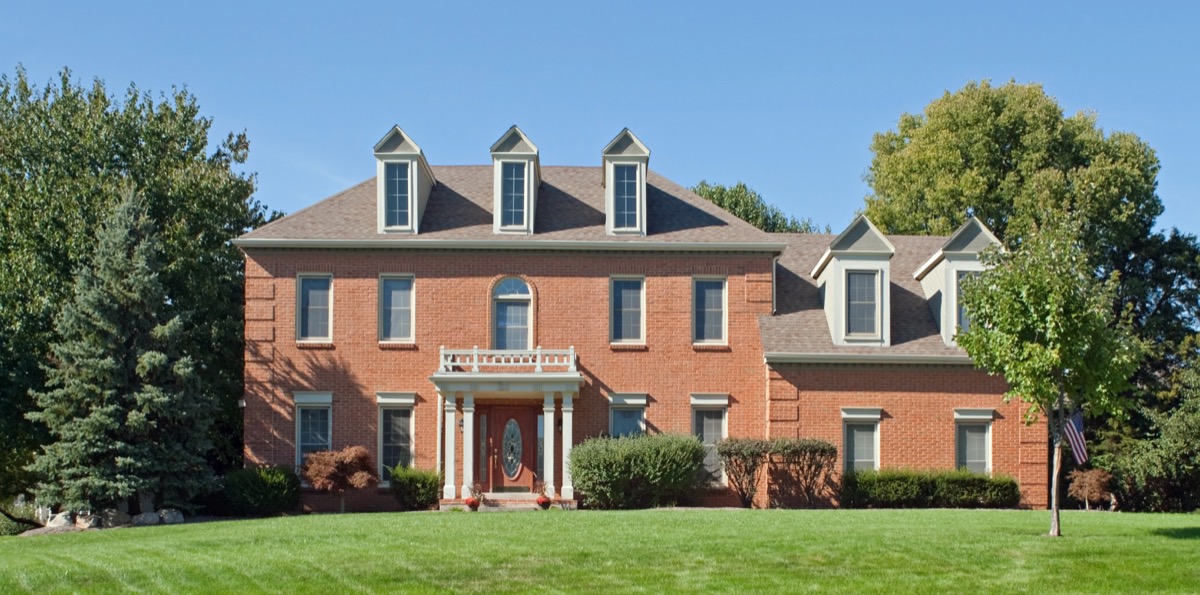
You might feel cramped in your home, but odds are you’re living larger than your parents or grandparents did. According to Census data, the average square footage of an American home was a spacious 2,344 square feet in 2018. Back in 1973, the average stateside home was only 1,660 square feet.
22
Your home’s yellow exterior could cost you big when you sell.
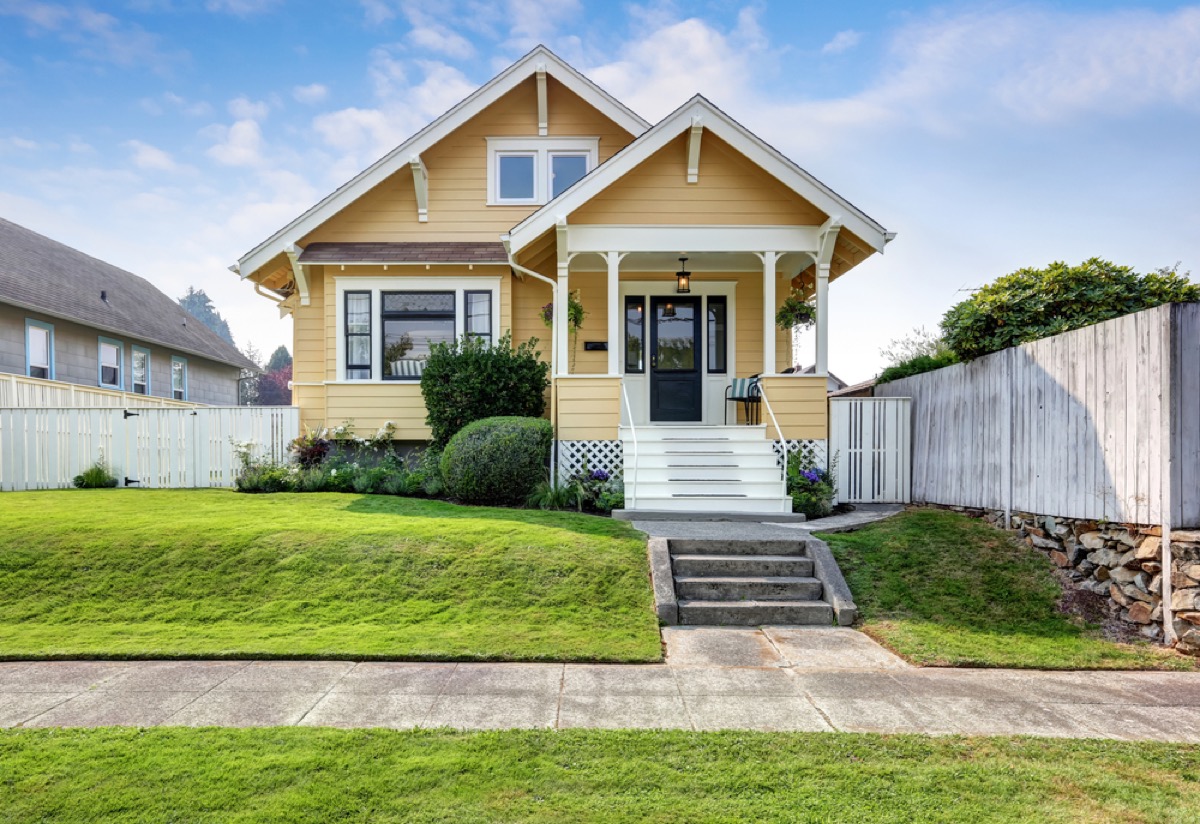
Before you put your yellow house on the market, it might be worth calling a painter. Yellow exteriors mean an average of $3,408 less in a seller’s pocket, according to Zillow.
23
Your home’s double faucets were intended to prevent illness.

There’s a specific reason why your sink has two faucets. As Kevin Wellman, chief executive officer of the Chartered Institute of Plumbing and Heating Engineering, explained to the BBC, the cold water faucet was traditionally linked to the local water supply, which had been treated and was safe to drink. On the other hand, the hot water faucet was typically connected to a tank stored in the homeowner’s attic, which would often be contaminated by bugs, rats, and random detritus, and, as such, was considered non-potable—and potentially hazardous.
24
Your pastel bathroom comes courtesy of a former first lady.
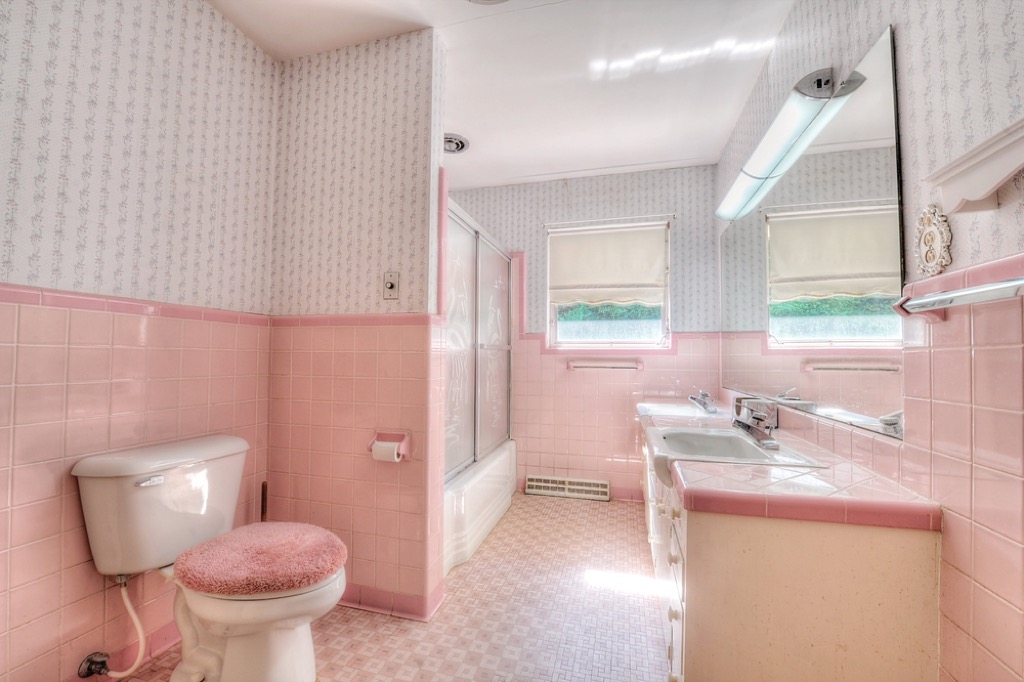
If you have a light pink bathroom in your house, Mamie Eisenhower may be to blame. The former First Lady was so passionate about pink that she redecorated her bathroom in her Gettysburg home almost entirely in the color—and, following in the trendsetter’s footsteps, many other builders and decorators did the same, according to The Pink Book. The pale pink color Mrs. Eisenhower preferred even came to be known as “Mamie pink.”
25
Your garage is probably so cluttered your car doesn’t fit.
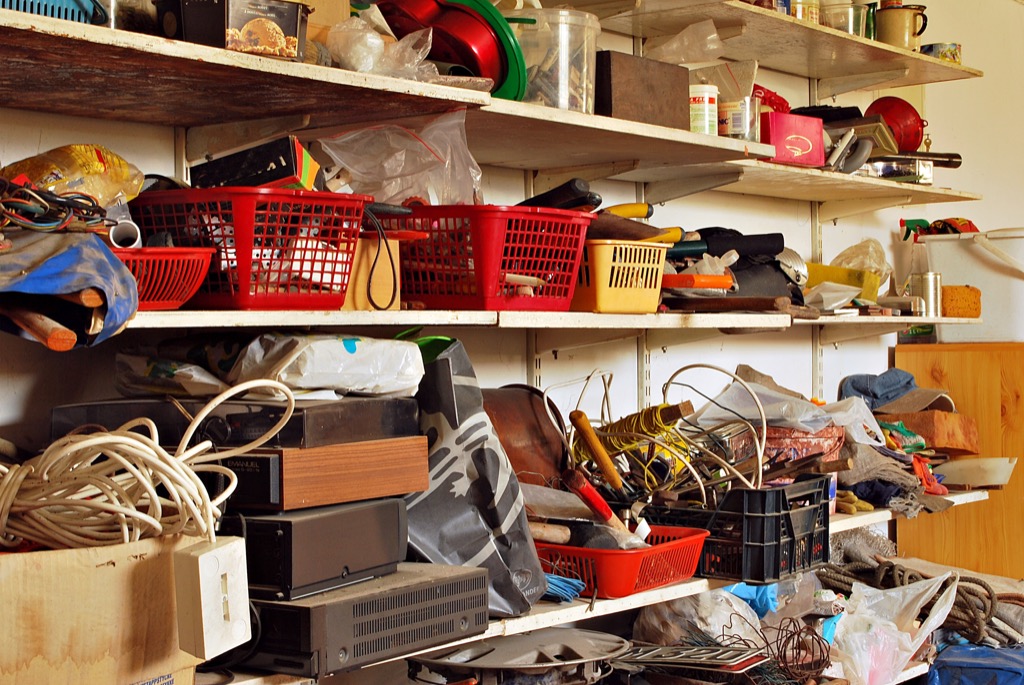
Just because you have a garage doesn’t necessarily mean you have enough room to keep your car out of the elements. In fact, according to one 2015 study conducted by Gladiator Garageworks, a quarter of Americans polled said their garages were so packed with stuff that there wasn’t room for their vehicle.